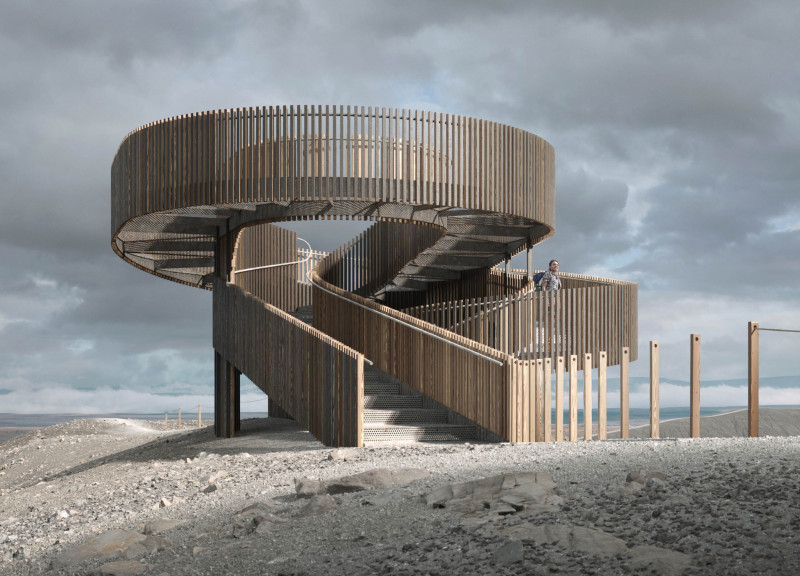5 key facts about this project
The Knot is an architectural design project situated at Hverfjall Lookout Point, Iceland. This structure serves as a visitor center and observation point, providing an immersive experience for those exploring the volcanic landscape of Hverfjall. The design integrates seamlessly into its surroundings, allowing visitors to engage with the site's natural beauty while offering shelter and amenities. The emphasis on interaction with the environment highlights the project’s function, which is to enhance visitor experience while preserving the integrity of the landscape.
Unique Design Approach and Integration with Nature
The Knot distinguishes itself through its innovative looping form, which guides visitors along a meandering path. Unlike conventional lookout structures that prioritize a singular vantage point, this design offers multiple perspectives, allowing users to enjoy varying views of the crater and surrounding topography. The pedestrian pathways are designed to accommodate diverse visitor flows while emphasizing safety and accessibility.
The structure employs an array of materials chosen for durability and aesthetic harmony with the environment. Galvanized steel forms the primary structural framework, ensuring resilience against the harsh climatic conditions of the area. Sanded and channeled timber adds organic warmth, enhancing the tactile experience of the space. Additionally, perforated metal panels create a balance between visual transparency and structural performance, allowing natural light to filter through while maintaining the integrity of the lookout.
Spatial Arrangement and Functionality
The spatial organization of The Knot facilitates movement and interaction. Key components include a spacious observation deck and accessible pathways leading to various viewpoints around the lookout point. The design promotes fluidity in circulation, enabling visitors to traverse the structure while enjoying scenic vistas seamlessly. Transition segments within the design create pauses for reflection and observation, further enhancing the engagement with the landscape.
The project achieves a thoughtful balance between natural landscape features and architectural intervention. By using local materials and considering the geological context, The Knot exemplifies a design ethos grounded in sustainability and respect for the natural environment. Visitors are not merely observants but become part of the journey, experiencing a harmonious blend of architecture and nature.
For a more comprehensive understanding of The Knot, the architectural plans, sections, and design ideas reveal the meticulous thought given to each element and how it contributes to the overall visitor experience. Exploring these details offers valuable insights into modern architectural strategies that address functionality and aesthetic integration within challenging environments.























